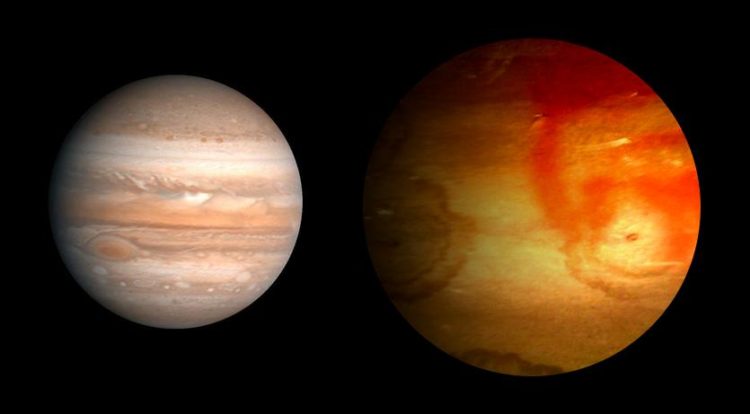By Eric King-
Scientist believe they have found a planet much hotter than anywhere on earth. Known as HAT-P-7b, the hot planet was found by the Kepler telescope and is in the milky way.
The Kepler telescope can detect differences in planet brightness and also heat. British researchers noticed that Kepler’s data showed a changing pattern in the amount of light reflected back from HAT-P-7b over time.
These changes indicate atmospheric swirling around the planet—in other words, weather. “This planet has very strong winds going round it,” according to David Armstrong, a physicist at the University of Warwick and lead author of the paper.
Scientists believe winds caused by atmosphere heated unevenly, with one side of HAT-P-7b is always facing the star, making it much hotter than the other. Wind results from colder air underneath rising warmer air.
On HAT-P-7b, “what those [winds] do is push clouds from the colder, dark side of the planet onto the brighter face side, and those clouds reflect the light from the stars.”
The displaced clouds reflect more light away from the planet, in what is known as the albedo effect
Colder air leads to the formation of clouds , forcing substances to condense into little droplets of solids spread throughout the air. Clouds in our planet comprise of a mix of tiny particles of water forming ice crystals around dust or other particles in the atmosphere.
On a planet as hot as HAT-P-7b, clouds are believed to be made of materials with much higher melting and boiling point. At temperatures that hot, most compounds are permanently in their gaseous states. “Something that has the right sort properties is called corundum,” says Armstrong. On Earth, where temperatures are much lower, corundum is found in rocks—the mineral, when combined with the right elements, forms rubies and sapphires. On HAT-P-7b, the mineral might be forming clouds. “It’s a very good possibility that these clouds are made of corundum, and we’re seeing essentially big condensed clouds of minerals being blown across the planet,” says Armstrong.
Scientists are uncertain whether these are gem-based clouds because they’re making observations from billions of miles away. They need a sample to analyse to confirm. Theoretically, weather can happen on any planet with an atmosphere, but this is the first time patterns resembling it have been observed in a gas giant exoplanet.

